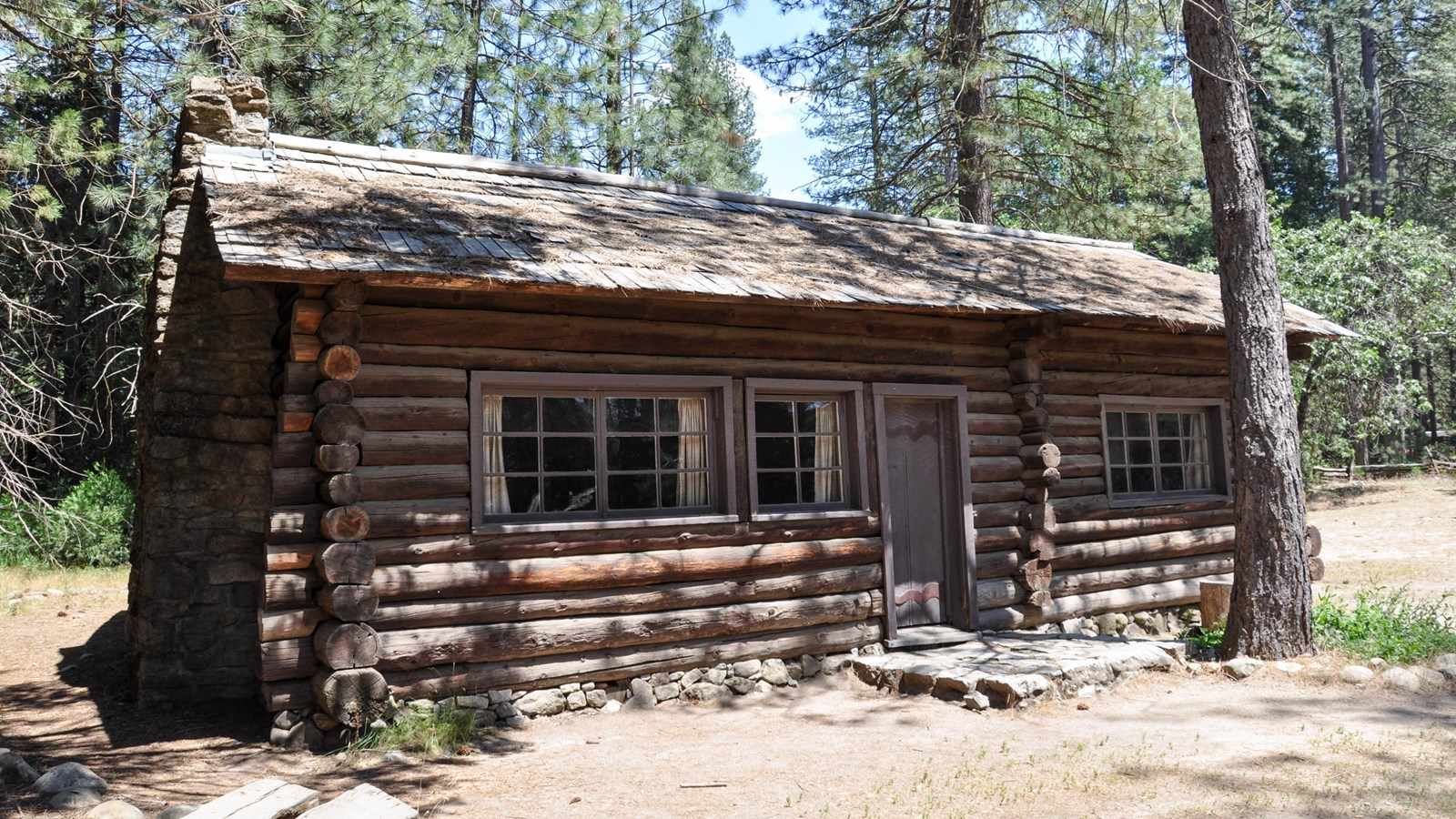Last updated: June 13, 2022
Place
Ranger Patrol Cabin

Historical/Interpretive Information/Exhibits
After twenty-three years protecting the park, the U.S. Army was called away from Yosemite in 1914, and civilians began to assume ranger roles. It was the job of these rangers to protect the natural resources, stop forest fires, and assist visitors. Their duties were made more difficult as automobiles had recently been allowed to enter the park.
The ranger patrol cabin was built in 1915 to house rangers at Crane Flat, a busy road junction. Buildings such as this were used as automobile check stations. Here drivers paid a fee to enter the park and were informed of regulations. Along sections of the Big Oak Flat and Wawona roads, automobiles were only permitted to go east, downgrade, on odd hours and west, upgrade, on even hours. At Crane Flat and others Yosemite locations, rangers needed to live close to backcountry patrol routes and roadside stations where they assisted visitors arriving by automobile. In 1916 the National Park Service was created and the rangers living here became some of the first National Park Service Rangers.
Gabriel Sovulewski, a Polish immigrant, embodied the administrative transition from the military to the National Park Service in Yosemite. He first saw Yosemite in 1895 while on a summer deployment to the park with the U.S. Army. In 1902, he left the Army and returned to Yosemite to work as a packer and guide. In 1906, Gabriel was placed in charge of Yosemite National Park, serving as the top park official for thirty years. During that time he directed the construction of trails and buildings such as the Ranger Patrol Cabin. Gabriel Sovulewski remained in Yosemite for the rest of his life, and is buried next to his wife, Rose in the Yosemite Cemetery.
